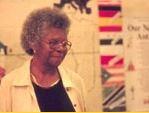
The material on this page is available to AustLit subscribers. If you are a subscriber or are from a subscribing organisation, please log in to gain full access. To explore options for subscribing to this unique teaching, research, and publishing resource for Australian culture and storytelling, please contact us or find out more.
Latest Issues
AbstractHistoryArchive Description
'This is Bonita Mabo’s personal Journey. A Journey that starts with the life she shared with Eddie Mabo and his fight for Native Title. But her story does not finish there, Bonita is even more determined to fight again. The fight for the recognition of her South Sea Islander people.' (Source: CAAMA website)
Publication Details of Only Known VersionEarliest 2 Known Versions of
Last amended 2 Sep 2015 13:50:03



